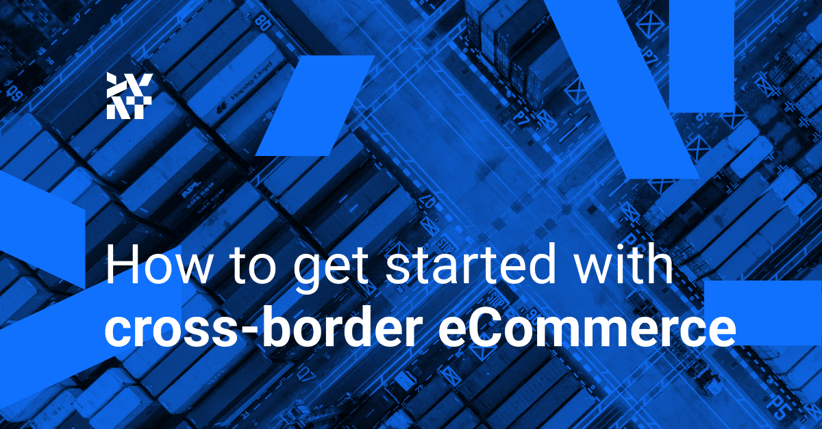Is your local eCommerce business operating smoothly, turning a profit, and showing potential for growth? If so, chances are you’re thinking about moving into markets overseas—and it could be an excellent move.
By its very nature, eCommerce has the ability to reach new audiences in different locations. So expanding your reach further by tapping into the global market seems like an obvious next step to grow your brand.
That said, cross-border eCommerce isn’t as simple as adding different currencies to your site or marketing your online store internationally. In reality, it requires thorough research, careful planning, and strategic execution to ensure you set yourself up for success.
It’s essential to understand elements such as market challenges, local regulations, and customer behavior in each country, and to adjust your strategy to match. To help you get started, this article will look at the most critical factors to consider if you want to transition from a local retailer to an international supplier.
Conduct thorough market research
If you’re planning an international eCommerce launch, it’s vital to start with the basics. Before you do anything else, conduct extensive research into the markets you’re considering selling to. Patterns of consumer behavior and demand vary widely from country to country. In other words, just because your product is selling by the bucketload in your home market, it doesn’t necessarily mean it will everywhere.
As well as establishing that there’s demand for what you’re selling, check all relevant regulations. It’s fairly common for food such as raw meat or dairy products to be banned for import, but some restrictions might surprise you. Did you know you can’t send second-hand clothing to Nigeria, for example? The International Trade Administration is a good site to visit to check which items are prohibited in various markets.
You also need to know if the economic conditions in your target market are favorable. It may be that you’ll need to rethink your pricing model to achieve success. Will you be able to turn a profit? You’ll have to run the numbers to make sure. Launching in another market is a resource-heavy endeavor, so it’s important to get it right the first time.
Determine your approach to sales
If you’ve done your market research, you should be in a good position to work out the best approach to sales to use. Again, this will vary depending on your product and the market you’re targeting.
 Source: Unsplash
Source: Unsplash
In most cases, your brand is likely to be unknown in the new market. That means you’ll have to create a connection with your target audience from scratch. It helps to have an easily identifiable unique selling point (USP) and to be able to explain it clearly.
It’s good practice to have a dedicated localization team, too. These should be people familiar with the target market and its culture who can help with the finer details of your approach to sales. What kind of brand voice will land best with local customers? How can you best stand out from the local competition? Are there any legal peculiarities you need to know about? All important questions that local experts can answer.
Make sure your accounting system can keep up
There are likely to be variations in accounting and tax practices across markets. Even if you know about these in principle, it’s vital to double-check that the systems you have in place are fit for their purpose. Nobody wants a tax compliance headache cropping up a few months down the line because the accounting software wasn’t up to the task.
Another important challenge to consider is how you might need to adapt your payment processes. Not all payment methods are available in every market. PayPal is usually a good default option, but even it isn’t fully available in some places. For instance, accounts in many African countries have only limited functionality. Research the payment methods popular among your target market and make it possible for customers to use them.
Create a strategy for logistics
Effective logistics are the lifeblood of any successful business. When you’re getting started with cross-border eCommerce, this should be at the forefront of your mind. After all, if you can’t reliably deliver on your promises, your customers won’t give you a second chance.
 Source: Unsplash
Source: Unsplash
Key to this is your shipping strategy. You’ll need to establish whether you can ship to customers directly or whether it would be better to outsource shipping to a third-party provider. One of the best cross-border eCommerce business strategy tips is to use a local carrier. By doing so, you can take advantage of a well-established distribution network that’s ready to go.
It’s crucial to price out logistics and shipping in advance. When you dig down into the details, you may find it simply doesn’t make financial sense to ship some products to certain markets. If that’s the case, you’ll want to limit which goods you sell.
Build a strong digital presence
You’ll need to be alert to the need to localize your website, too. Multi-language support and currency conversion should be a given. However, there’s more to having a strong digital presence than just tweaking your user interface.
The digital marketing strategy you’ve been using in your home market won’t necessarily translate to a foreign one. Consult with your localization team on this. They’ll know which social media sites are popular among your target market so you can develop an appropriate strategy. Take their advice on how to speak to potential customers to make a genuine connection and build trust.
One tactic to try is influencer marketing. If you can partner with influencers from your target market, it’s a great way to get your foot in the door. Consider cross-collaboration projects and digital events. These offer an excellent opportunity to put your proposition in front of potential customers.
Keep an eye on your inventory and fulfillment
When you’re scaling up, it can be a shock to the system. The delicate balance of maintaining optimal inventory and making quick deliveries happen can be disrupted. That means we need to talk about enterprise resource planning (ERP).

Free-to-use image sourced from Unsplash
What is ERP? It’s about how you make sure all your operational processes are streamlined and working effectively. It’s worth investing in a fully integrated ERP system because this will provide the cohesion you need as your business grows.
Platforms like this bring together data from all your systems from customer relationship management (CRM) and HR tools to inventory management. Being able to analyze your inventory and order fulfillment in context is key and means you can respond quickly to a changing business environment and continue to deliver for your customers.
Ensure strong customer support and satisfaction
Attracting customers is one thing, but keeping them is quite another. There are many useful customer retention strategies out there, but they won’t work if you’re not providing the level of support you should be.
Prioritize localizing your support service. There are many reasons for doing this. If a customer has a problem, they obviously need to be able to discuss it in their own language. Support should also be available at times that are convenient for them.
This is an area where most businesses will benefit from looking at third-party support providers. That’s especially true if you’re moving into a large number of markets at once. The volume of support requests can quickly become unmanageable if everything is centralized.
Your support service is the cornerstone of trust in your business, but it’s not enough on its own to guarantee high levels of customer satisfaction. It’s worth monitoring how things are going using appropriate feedback mechanisms. Try tracking CSAT and NPR scores over time so you’ll be alerted quickly if a problem develops.
Monitor your performance, and adjust your strategy as needed
Tracking scores keeps you plugged into the reality on the ground. Putting localization strategies first and implementing an ERP system to manage processes will get you off to a great start. But remember that it’s important to keep in mind that cross-border eCommerce happens within an evolving context.
 Source: Unsplash
Source: Unsplash
It’s crucial to monitor your performance in a data-driven way. As well as keeping an eye on customer satisfaction, you should follow engagement and sales metrics as you would in your home market.
The complicating factor with selling to international markets is the external environment. You have no control over changes in customs or tax policy, for example, so it’s vital to have a process in place that ensures you remain compliant with changing regulations.
Any kind of sales strategy is an iterative process. There’s always going to be some degree of experimentation, even if you understand your market well, and it’s important to make full use of all the tools available to achieve actionable insights. This way, you can adjust your strategy accordingly and take your business to the next level.
Final thoughts
Let’s face it: scaling up your eCommerce business to sell overseas is an exciting prospect. You’ll be able to reach so many more customers, and the financial upsides can be enormous.
It’s important to get the fundamentals in place before you launch, though. Too often, businesses make the mistake of assuming that what works in their home market will work abroad. Then they’re unpleasantly surprised when things don’t play out as expected.
With solid research and planning in place, you can avoid falling into this trap. Invest as much time and effort as you can into understanding your target markets in detail.
Stevie Carpenter is a content marketing specialist with over a decade of experience helping small and enterprise-sized businesses develop innovative digital content. He specializes in content for search and lead generation, developing strategies for well-known brands in the eCommerce, SaaS, and communication sectors, among others.
Published April 21, 2023









